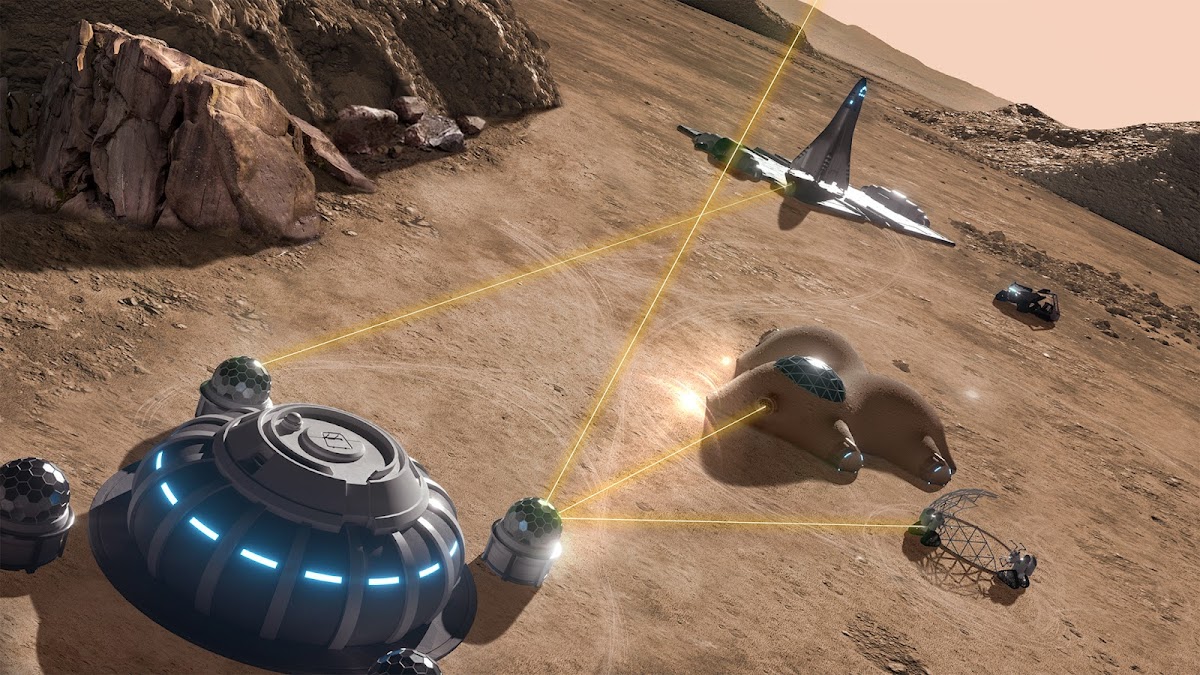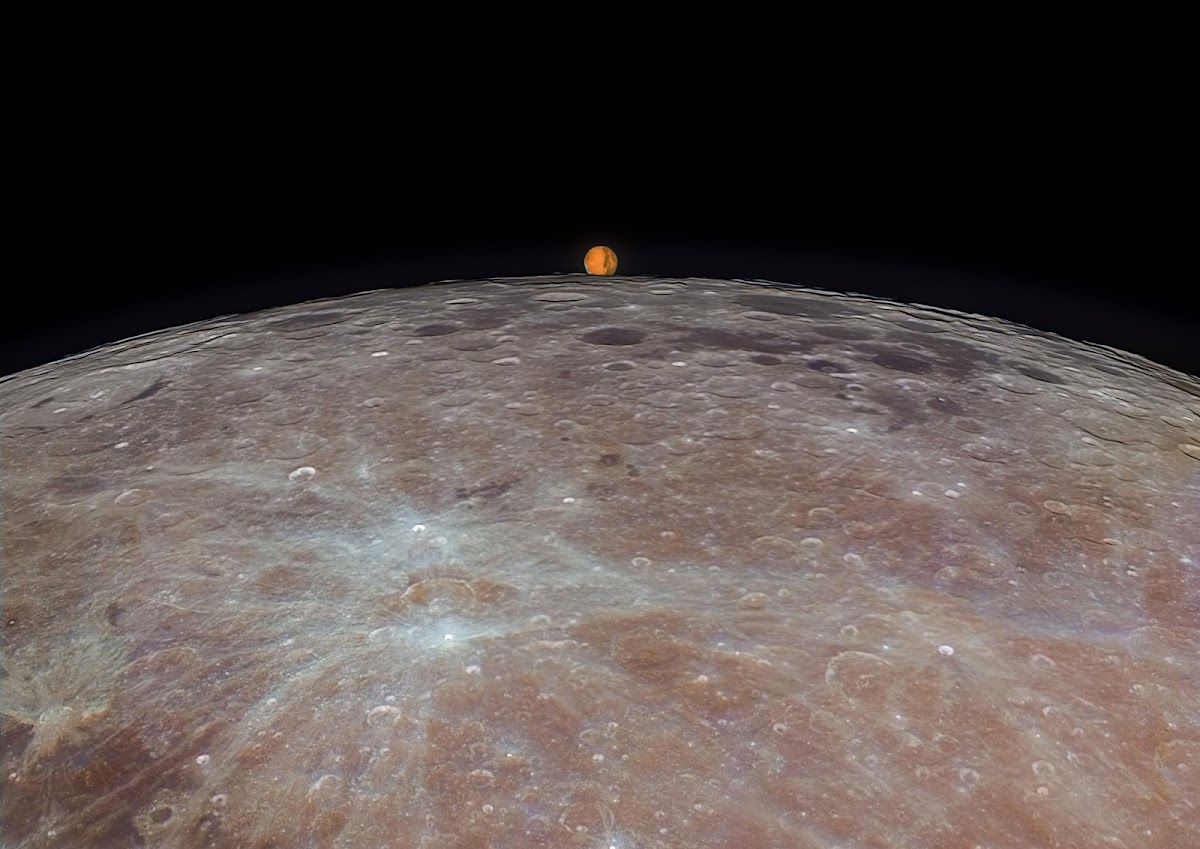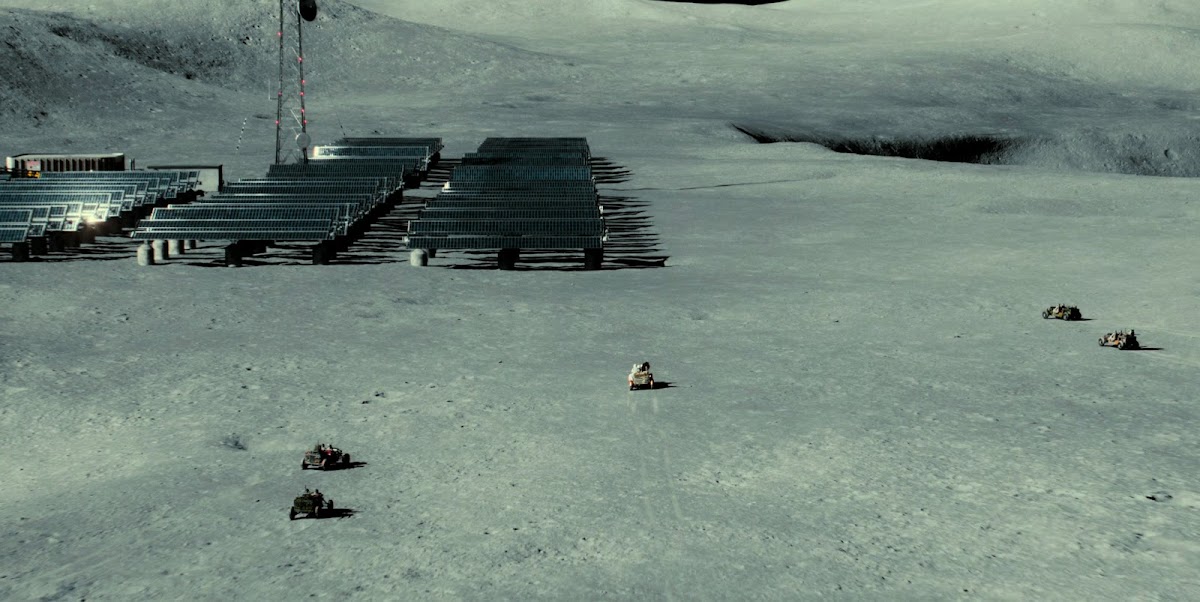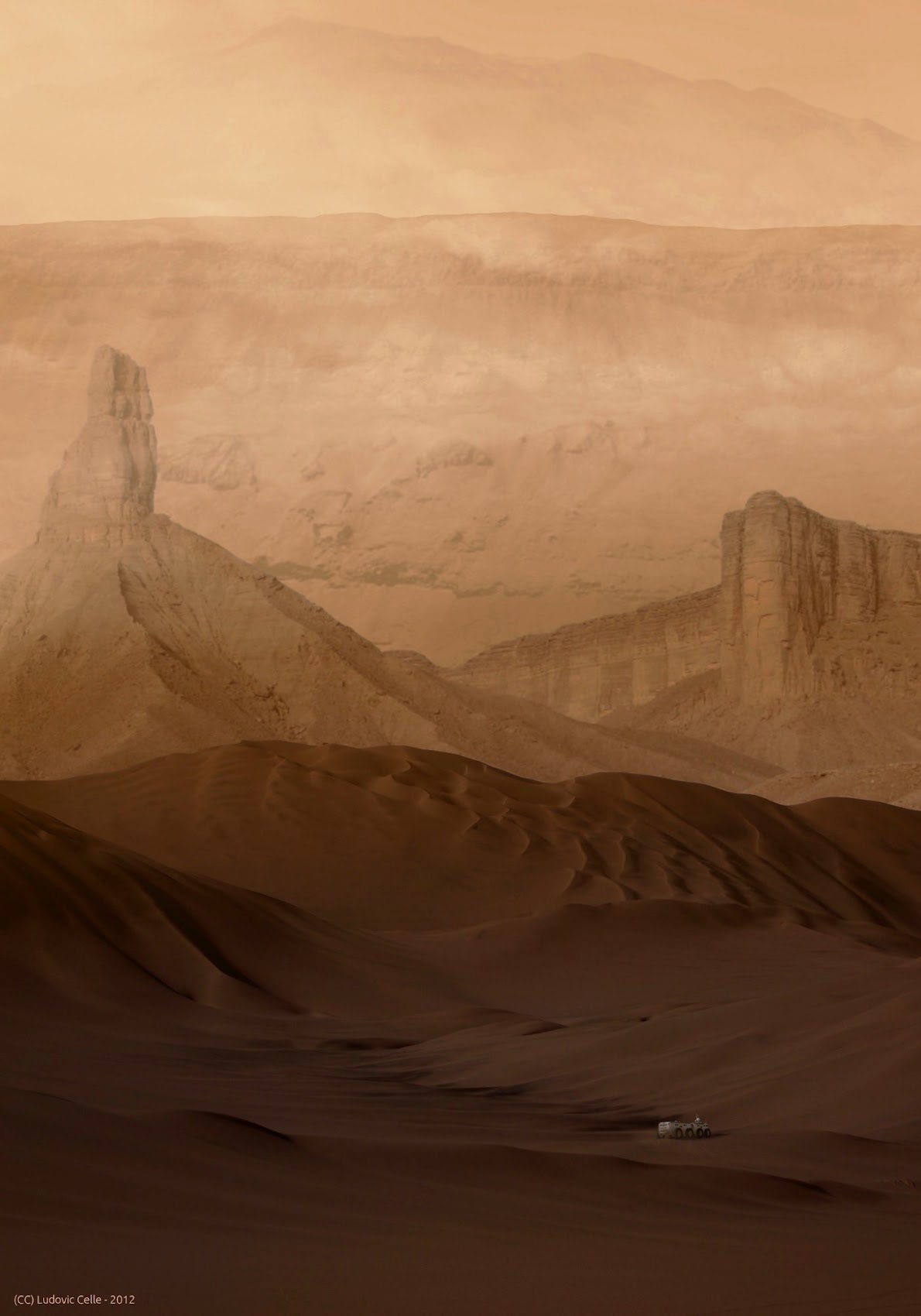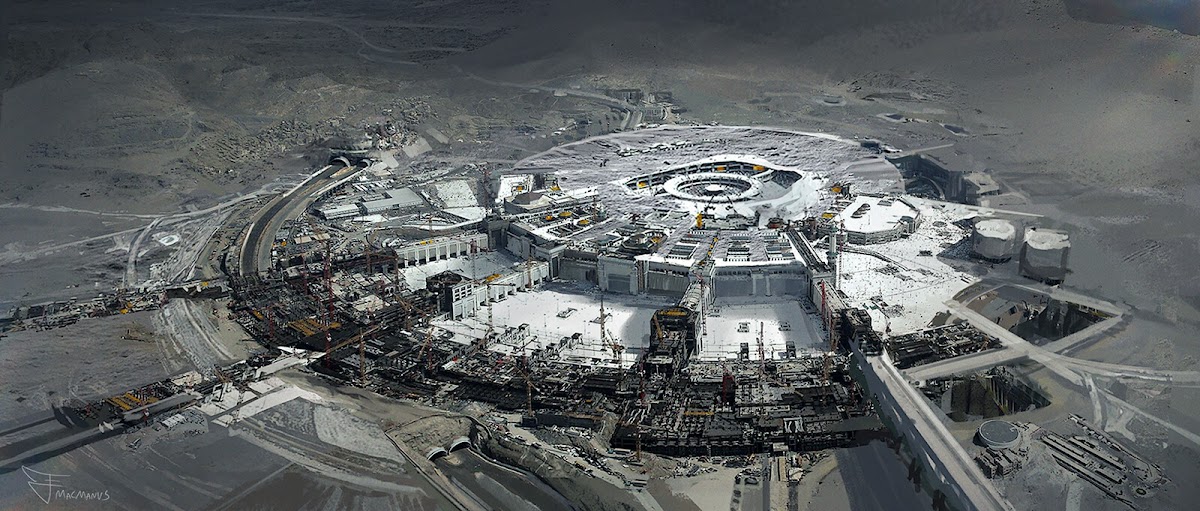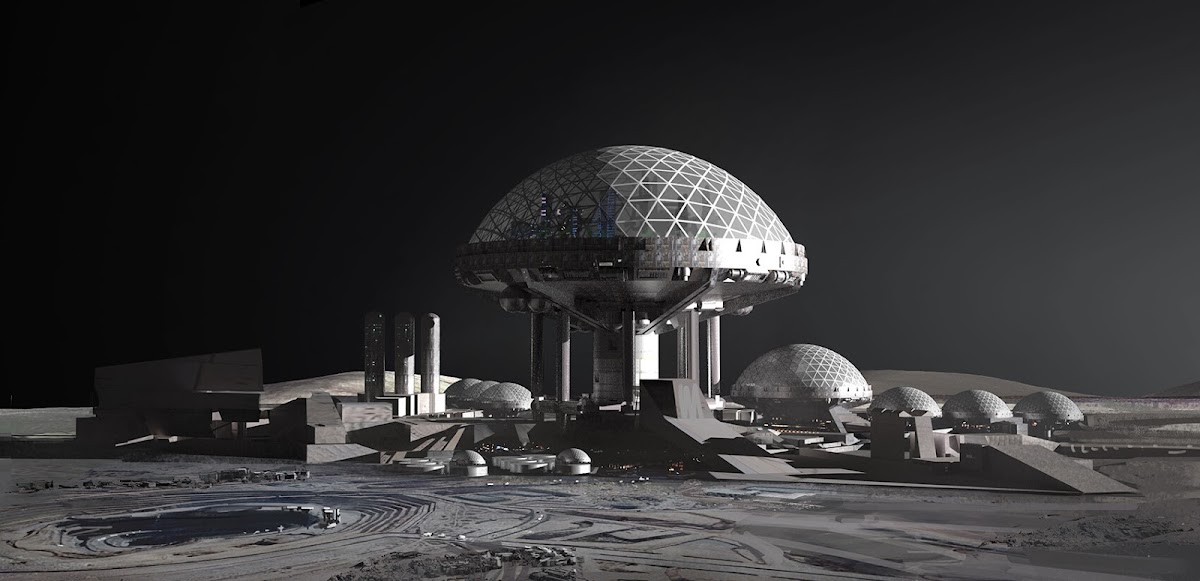Lockheed Martin's animation of "Destination: Space 2050" vision:
Friday, December 30, 2022
Lockheed Martin's vision for Mars base in 2050
At its "Destination: Space 2050" event in October Lockheed Martin (one of the largest American aerospace, advanced technologies and defense companies) shared its vision of a vibrant space economy in the year 2050. Here Lockheed Martin envisions a future on Mars with "power beaming, laser communications and robotic in-situ construction for a sustainable living and economic environment". Note company's conceptual Mars lander on the landing pad.
Sunday, December 11, 2022
Mars rising over the Moon's horizon; photo by Andrew McCarthy
 Awesome photography of planet Mars rising over the horizon of the Moon captured by American astrophotographer Andrew McCarthy on 8th of December, 2022.
Awesome photography of planet Mars rising over the horizon of the Moon captured by American astrophotographer Andrew McCarthy on 8th of December, 2022.
Friday, December 9, 2022
Phobos as a space elevator for Mars
 Building a Martian space elevator would be complicated by the Martian moon Phobos, which is in a low orbit at ~6,028 km above the Martian surface and intersects the Equator regularly, thus getting in the way of a traditional geostationary space elevator. But there is an idea instead to build a space elevator from Phobos itself.
Building a Martian space elevator would be complicated by the Martian moon Phobos, which is in a low orbit at ~6,028 km above the Martian surface and intersects the Equator regularly, thus getting in the way of a traditional geostationary space elevator. But there is an idea instead to build a space elevator from Phobos itself.
Phobos is tidally locked to Mars (as the Moon is to Earth), where the same side of the moon stays facing the planet. A space elevator could extend down from Phobos to Mars 6,000 km, about 28 kilometers from the surface, and just out of the atmosphere of Mars. A similar space elevator cable could extend out 6,000 km the opposite direction that would counterbalance Phobos. In total the space elevator would extend out over 12,000 km which would be below Areostationary orbit of Mars (17,032 km).
A rocket launch would still be needed to get the rocket and cargo to the beginning of the space elevator 28 km above the surface. The surface of Mars is rotating at 0.25 km/s at the equator and the bottom of the space elevator would be rotating around Mars at 0.77 km/s, so only 0.52 km/s of Delta-v would be needed to get to the space elevator. Phobos orbits at 2.15 km/s and the outer most part of the space elevator would rotate around Mars at 3.52 km/s.
In our speculative Mars Colonization Timeline we have estimated such a Phobos-based space elevator could be built as soon as in 2080s–2090s. In adition to the space elevator there could be built a shuttle port at the summit of Pavonis Mons – the Martian volcano practically on the equator – for shuttles heading to and coming from Phobos space elevator. The summit of Pavonis Mons is standing 14 km above Mars' mean surface level (way above the denser part of the atmosphere), halving the needed trip to the shuttle platform at space elavator's lower tip 28 km above the surface.
Wednesday, December 7, 2022
Lunar colony in Ad Astra (2019) movie
Ad Astra is 2019 science fiction thriller set in mid-21st century when humanity has started to settle the inner Solar System. One of the most memorable parts of the movie is human colony on the Moon with space pirates :) chasing military rover convoy going to the spaceport on the far side of the Moon.
In the movie a son (Brad Pitt), serving in the military, is sent on a mission to uncover the truth about his famous father's (Tommy Lee Jones) long lost mission near Neptune which now threatens the survival of Earth. In his lonesome and dangerous mission he visits several places including a dynamic but wild human colony on the Moon and a desolate relay station on Mars. Here is a collection of HD images from the Lunar part of the movie:
In the movie a son (Brad Pitt), serving in the military, is sent on a mission to uncover the truth about his famous father's (Tommy Lee Jones) long lost mission near Neptune which now threatens the survival of Earth. In his lonesome and dangerous mission he visits several places including a dynamic but wild human colony on the Moon and a desolate relay station on Mars. Here is a collection of HD images from the Lunar part of the movie:
Tuesday, December 6, 2022
Exploration rover in Noctis Labyrinthus, Mars by Ludovic Celle
 Picture of the Day 06/12/2022 - Large human exploration rover in Noctis Labyrinthus, Mars (a region with maze-like system of deep, steep-walled valleys West of Valles Marineris) by French graphic artist Ludovic Celle. More of his Mars art here.
Picture of the Day 06/12/2022 - Large human exploration rover in Noctis Labyrinthus, Mars (a region with maze-like system of deep, steep-walled valleys West of Valles Marineris) by French graphic artist Ludovic Celle. More of his Mars art here.
Saturday, December 3, 2022
Lunar colony concept art for Ad Astra by Finnian MacManus
Concept art of the Lunar colony in Ad Astra (2019) movie (science fiction thriller set in mid-21st century when humanity has started to settle the inner Solar System) by film, game and TV concept artist, the founder and creative director of Terraform Studios, Finnian MacManus. More of his art here.
Subscribe to:
Comments (Atom)

